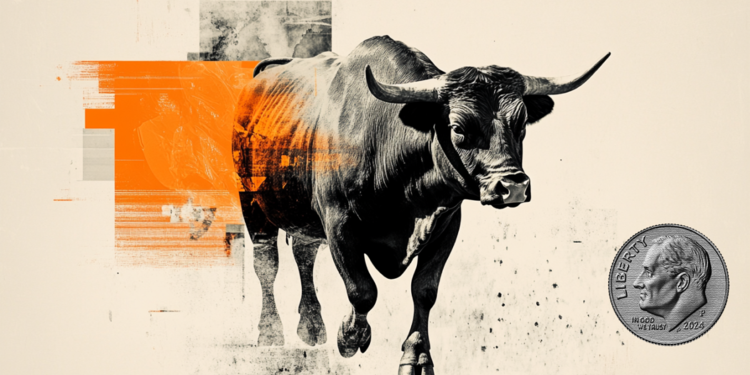- The Indian Rupee extends its decline in Thursday’s Asian session.
- Rising bets of RBI rate cuts and risk aversion continue to undermine the INR.
- The RBI interest rate decision and the US January employment report will be in the spotlight on Friday.
The Indian Rupee (INR) extends its downside on Thursday. The local currency remains under selling pressure amid the expectation that the Reserve Bank of India (RBI) might cut the interest rates on Friday. Additionally, global trade war concerns fuelled risk aversion among investors, weighing on the INR.
Nonetheless, the foreign exchange intervention by the RBI and a decline in crude oil prices might help limit the Indian Rupee’s losses. Later on Thursday, the US weekly Initial Jobless Claims, Unit Labor Costs and Nonfarm Productivity will be released. The attention will shift to the RBI interest rate decision and the US January employment data on Friday.
Indian Rupee falls as India’s new RBI Governor is set to begin rate cuts
- Most of the economists surveyed by Bloomberg anticipate the Indian central bank to lower the benchmark repurchase rate by at least 25 basis points (bps) to 6.25% on Friday.
- HSBC India Composite PMI came in at 57.7 in January. This figure came in weaker than the previous reading and the estimation of 57.9.
- HSBC India Services PMI eased to a two-year low of 56.5 in January versus 56.8 prior, lower than expected.
- “India’s services sector lost growth momentum in January, although the PMI remained well above the 50-break-even level. The business activity and new business PMI indices eased to their lowest levels since November 2022 and November 2023, respectively,” said Pranjul Bhandari, Chief India Economist at HSBC.
- The US Services PMI eased to 52.8 in January from 54.0 (revised from 54.1) in December, according to the Institute for Supply Management (ISM) on Wednesday. This reading came in below the market consensus of 54.3.
- Fed Vice Chair Philip Jefferson said on Thursday that he is happy to keep the Fed Funds on hold at the current level, adding that he will wait to see the net effect of Trump policies.
USD/INR maintains its positive trend
The Indian Rupee trades in negative territory on the day. The bullish view of the USD/INR pair prevails, characterized by the price holding above the key 100-day Exponential Moving Average (EMA). However, further consolidation cannot be ruled out before positioning for any near-term USD/INR appreciation as the 14-day Relative Strength Index (RSI) moves beyond the 70.00 mark.
The first upside barrier for USD/INR emerges at 87.49, an all-time high. Bullish candlesticks and buying pressure above this level might attract the pair to the 88.00 psychological level.
On the other hand, the 87.05-87.00 area acts as an initial support level for the pair, representing the low of February 5 and the round mark. More bearish candles or consistent trading below the mentioned level, the bears could take control and drag USD/INR down to 86.51, the low of February 3.
Indian Rupee FAQs
The Indian Rupee (INR) is one of the most sensitive currencies to external factors. The price of Crude Oil (the country is highly dependent on imported Oil), the value of the US Dollar – most trade is conducted in USD – and the level of foreign investment, are all influential. Direct intervention by the Reserve Bank of India (RBI) in FX markets to keep the exchange rate stable, as well as the level of interest rates set by the RBI, are further major influencing factors on the Rupee.
The Reserve Bank of India (RBI) actively intervenes in forex markets to maintain a stable exchange rate, to help facilitate trade. In addition, the RBI tries to maintain the inflation rate at its 4% target by adjusting interest rates. Higher interest rates usually strengthen the Rupee. This is due to the role of the ‘carry trade’ in which investors borrow in countries with lower interest rates so as to place their money in countries’ offering relatively higher interest rates and profit from the difference.
Macroeconomic factors that influence the value of the Rupee include inflation, interest rates, the economic growth rate (GDP), the balance of trade, and inflows from foreign investment. A higher growth rate can lead to more overseas investment, pushing up demand for the Rupee. A less negative balance of trade will eventually lead to a stronger Rupee. Higher interest rates, especially real rates (interest rates less inflation) are also positive for the Rupee. A risk-on environment can lead to greater inflows of Foreign Direct and Indirect Investment (FDI and FII), which also benefit the Rupee.
Higher inflation, particularly, if it is comparatively higher than India’s peers, is generally negative for the currency as it reflects devaluation through oversupply. Inflation also increases the cost of exports, leading to more Rupees being sold to purchase foreign imports, which is Rupee-negative. At the same time, higher inflation usually leads to the Reserve Bank of India (RBI) raising interest rates and this can be positive for the Rupee, due to increased demand from international investors. The opposite effect is true of lower inflation.
Read the full article here

